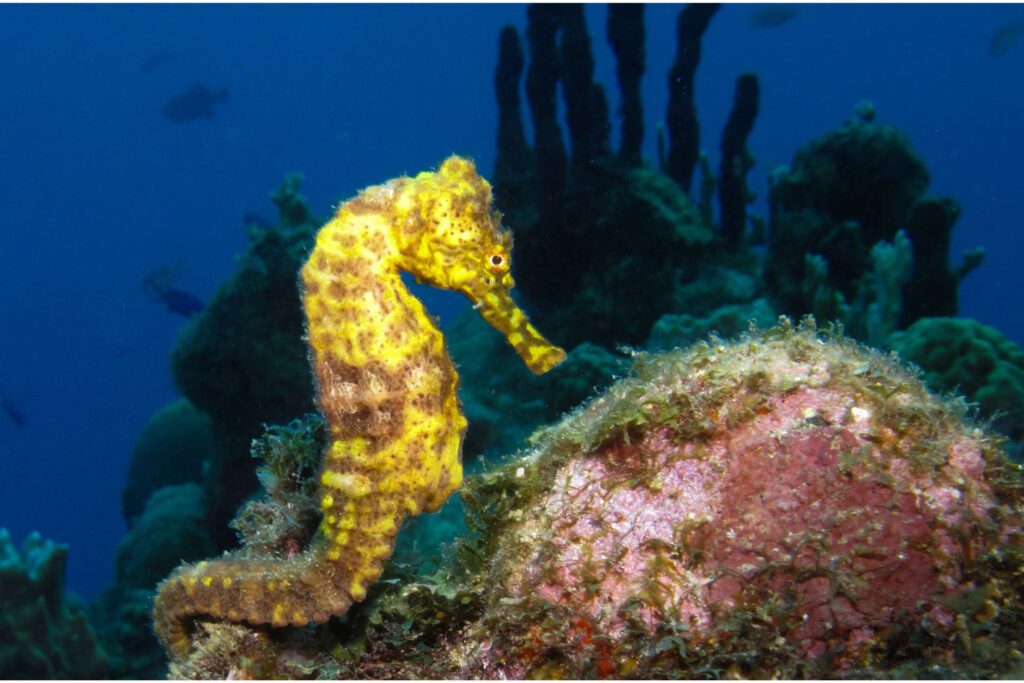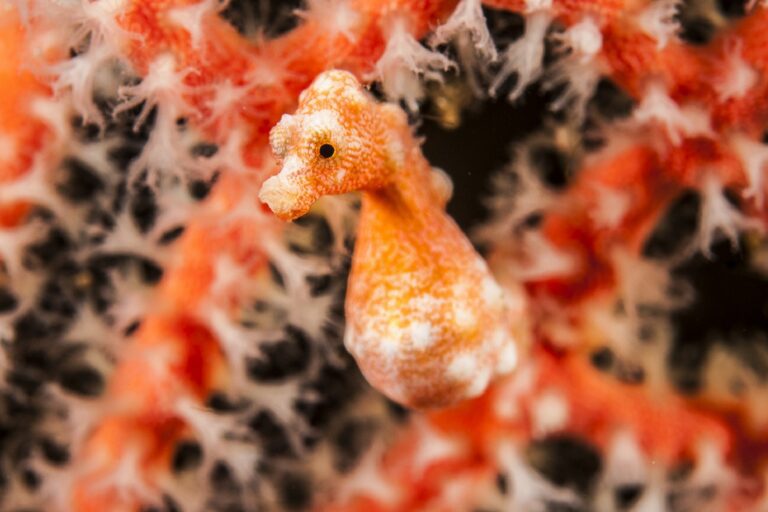Seahorse, with their peculiar equine appearance and captivating behaviours, are among the most iconic and enigmatic creatures of the sea. These tiny marine organisms play an essential role in ocean ecosystems and serve as indicators of the overall health of marine environments. However, seahorses are facing numerous threats that endanger their existence. In this comprehensive article, we will explore the importance of seahorse conservation, the challenges they encounter, and the critical efforts being made worldwide to protect and preserve these fascinating creatures.
The Importance of Seahorse Conservation
Seahorses, belonging to the family Syngnathidae, have fascinated marine enthusiasts and scientists alike for centuries. While they may seem whimsical and inconsequential, their significance in ocean conservation cannot be overstated. Here are several reasons why seahorses deserve our attention and protection:
- Indicator Species: Seahorses are considered indicator species, meaning their presence and well-being can serve as a barometer for the health of marine ecosystems. Their vulnerability to environmental changes and pollution makes them valuable indicators of the overall state of coastal waters.
- Biodiversity: Seahorses are a part of the intricate web of marine biodiversity. They are both predators and prey, playing a vital role in maintaining the balance of their ecosystems.
- Medical Research: Seahorses have been studied for their unique anatomy and biology, including their ability to change colour and their intricate courtship rituals. This research has the potential to yield insights into fields like genetics and biomechanics.
- Cultural Significance: Seahorses hold cultural significance in many societies around the world. They are often symbols of luck, strength, and protection, and their conservation is tied to cultural heritage.
Challenges to Seahorse Conservation
Despite their ecological importance and cultural significance, seahorses face a multitude of threats that put their populations at risk:
- Habitat Destruction: Coastal development, including the construction of marinas and resorts, results in the destruction of seagrass beds and coral reefs, which are vital habitats for seahorses.
- Overfishing: Seahorses are often targeted for the traditional medicine trade, curio market, and aquarium trade. They are also caught inadvertently in fishing nets, a practice known as bycatch.
- Habitat Degradation: Pollution from runoff, sewage, and industrial activities can degrade seahorse habitats and decrease water quality, making it difficult for them to thrive.
- Climate Change: Rising sea temperatures and ocean acidification due to climate change can have adverse effects on seahorses and their prey, disrupting their food chain.
- Illegal Trade: Seahorses are traded illegally in many parts of the world, despite international regulations. The demand for their use in traditional medicine and the curio market remains high.
Efforts in Seahorse Conservation

Recognising the urgent need to protect seahorses and their habitats, numerous organisations, governments, and individuals are working diligently to address these challenges and ensure the long-term survival of these unique creatures. Here are some key conservation efforts and strategies:
- Marine Protected Areas (MPAs): Establishing MPAs that include seahorse habitats is one of the most effective ways to safeguard these creatures. MPAs restrict fishing and other potentially harmful activities, allowing seahorse populations to recover.
- Sustainable Fishing Practices: Implementing sustainable fishing practices, including size and catch limits, can help protect seahorse populations from overexploitation.
- Habitat Restoration: Efforts are underway to restore seagrass beds and coral reefs, which serve as essential habitats for seahorses.
- Education and Awareness: Raising awareness about seahorse conservation is crucial. Public education campaigns, school programs, and outreach initiatives help inform communities and reduce the demand for seahorses in traditional medicine and the curio trade.
- Research and Monitoring: Ongoing research is essential to better understand seahorse populations, their habitat requirements, and their ecological roles. Monitoring programs help track changes in seahorse populations and their habitats.
Success Stories in Seahorse Conservation
While seahorses face significant challenges, there are notable success stories in seahorse conservation:
- Bargibanti Pygmy Seahorse Conservation, Indonesia: The Bargibanti pygmy seahorse, one of the world’s smallest seahorse species, is found in Indonesia’s coral reefs. Conservation organisations have worked to protect their habitats through community engagement and education.
- Philippine Seahorse Sanctuary: In the Philippines, the Danajon Bank Double Barrier Reef has been declared a Marine Protected Area. This designation has helped protect the rich seahorse biodiversity in the region.
- Syngnathid Husbandry: Some aquariums and research institutions are developing successful seahorse breeding programs, reducing the demand for wild-caught seahorses in the aquarium trade.
Conclusion
Seahorse conservation is not just about protecting a fascinating marine species; it is about preserving the health and resilience of our oceans. These fragile creatures serve as sentinels, warning us of the challenges faced by marine ecosystems. By taking action to protect seahorses and their habitats, we can contribute to the overall well-being of our oceans and the countless species that depend on them.
Efforts to protect seahorses, such as the establishment of marine protected areas, sustainable fishing practices, habitat restoration, and education campaigns, are essential steps in ensuring their survival. Seahorses may be small, but their conservation carries enormous significance for the health of our planet and the generations that will inherit it. Let us strive to be stewards of the sea and guardians of these fragile wonders beneath the waves.
UP NEXT
Preserving Paradise: Sea Turtle Conservation in Bali
Mangroves – Vital Guardians of Coastal and Ocean Health



